Beyond Just Lodging, B&B Kioto Offers A Warm, Authentic Japanese Experience
Bed, breakfast and downtime in an old machiya townhouse
A lifelong pursuit of personal encounters and local cultures led this woman to start her own lodging in Kyoto, where you can enjoy those things, too.
About three years ago, Akiko Hayakawa, at last, found the house she had been looking for. Impatient to begin her next journey, she packed her bags and left her hometown of Tokyo to set up a bed and breakfast lodging in Kyoto. With her two children grown up and out of the nest, it was time, she says, “to do what I really wanted to do” – try her hand at business and share with others the experience of life in Japan.
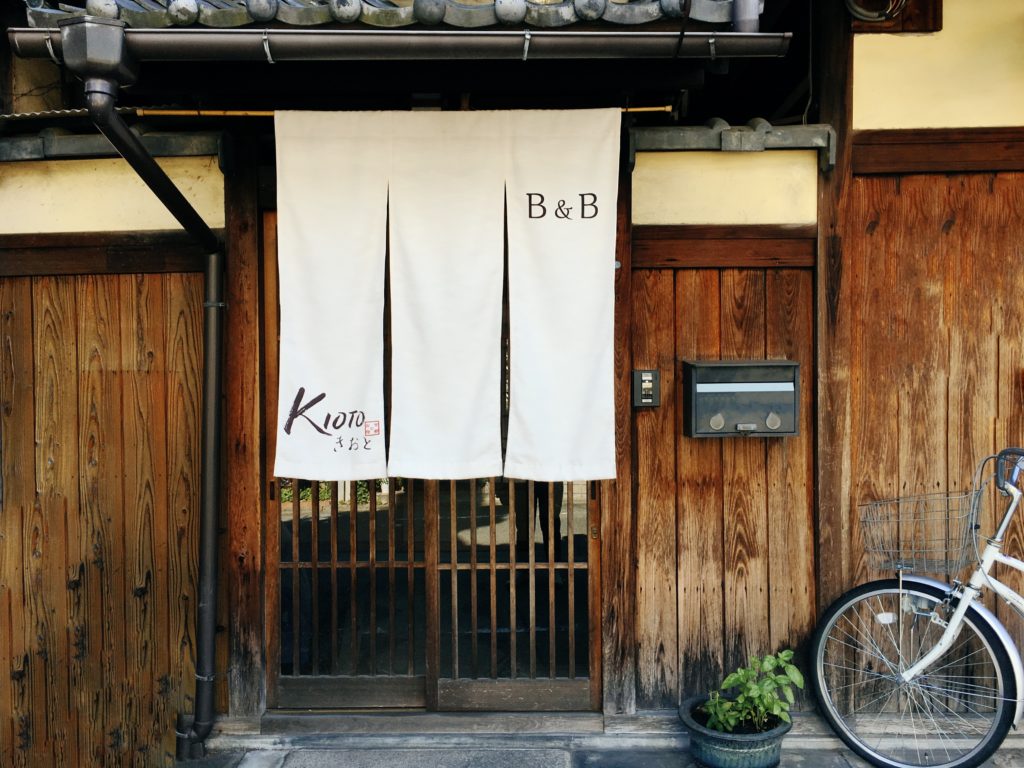
B&B Kioto
The house, in the north of Kyoto City, is a traditional two-story machiya townhouse that Hayakawa estimates to be about 95 years old. After passing through the roofed wooden gate, there is an entranceway with a concrete path and pebble siding. It leads to a kitchen area that has been updated from the old earthen hearth. To the right side of the entranceway is a stone step to help you into the living area, which is all tatami-mat flooring, earthen walls, wood ceilings, paper doors and intricate wooden detailing. The main room faces onto a pebble-floored garden with a stone lantern and a young maple tree.
Hayakawa’s own enjoyment of travel, and particularly of experiencing other countries on a local level, is part of the reason why she started Kioto.
“From some time ago, I had wanted to run some kind of business. I didn’t know what kind of business that was, but since I’ve traveled here and there and experienced staying at these kinds of places, and also since I enjoy interacting with people, I thought it would be great to do that while providing this kind of stay to others. Then I happened to find this house and I thought, I’ll give it a go.”

Akiko Hayakawa poses for a photograph in front of her B&B Kioto in Kyoto, Japan.
What Hayakawa means by “these kinds of places,” is lodgings that are inextricably linked to their locality and the lifestyle there.
“I want people visiting Kyoto to be able to see that this is what a house here looks like. That’s an interesting experience all on its own.”
Catering to guests’ individual needs
Hayakawa is concerned about more than just the nuts and bolts and has a sincere desire to help her guests experience Japan in a way that is uniquely suited to each individual’s interests.
While most visitors spend their days busily sightseeing, some take advantage of the B&B’s calming environment and the presence of an attentive local on hand to sit and chat with Hayakawa and pose to her the many questions they have about Japan’s enigmatic society and culture.
Hayakawa gives guests their own key and lets them spend their time at Kioto however they like.
“One guest,” she says, “didn’t go out much and instead spent most of her stay just relaxing here.”
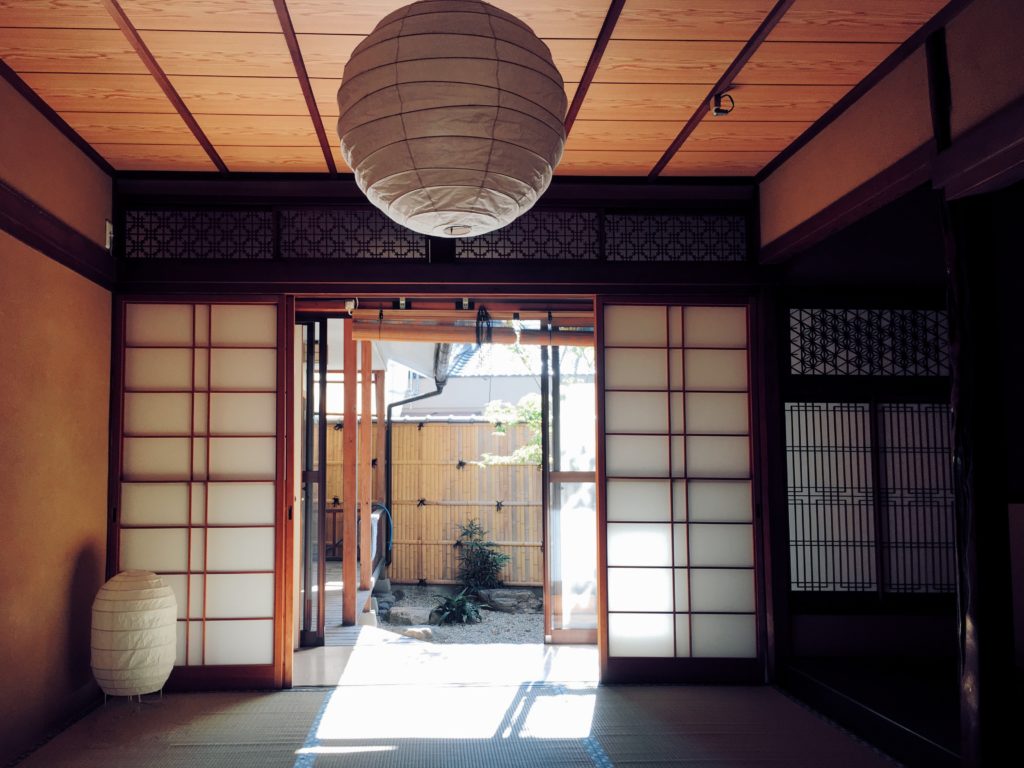
Inside B&B Kioto
When another guest asked her how to make sushi, Hayakawa decided to show, rather than just tell, and they together made sushi at her kitchen table.
Able to take just one booking at a time, for a maximum of five people, the scale of her lodgings is not big enough to make a living, she says. But the level of service that she offers would be hard to quantify in yen.
After receiving an internet inquiry about karesansui, the traditional Japanese rock-and-stone style of zen garden, from a Singaporean who was working at a botanical garden there, Hayakawa arranged for him to participate in karesansui maintenance with a Japanese gardener that was part of her circle of family and friends.
“The things that each individual wants to do are all different,” she says. “Tea ceremony and wearing a kimono have become quite well-known activities for tourists, but visitors’ desires have started to diversify. So, as much as possible, I want to fulfill the requests of such people.”
Communication is key
Almost all of Kioto’s guests come from overseas. Hayakawa estimates that about 75% of them are Chinese. She communicates with them in English, or via the kanji written characters that are often similar in Chinese, and through gestures. When all else fails, she uses a translation site on her cell phone.
Tea ceremony and wearing a kimono have become quite well-known activities for tourists, but visitors’ desires have started to diversify.
In about two years of operation, she has had only one negative experience running the B&B, when one couple used Hayakawa’s own bathroom cabinet products, including her toothbrush. She says that a frank, clear communication with her guests has prevented any bigger troubles. It also helps her understand their preferences and needs, so that she can cater to those. Guests seem to understand that staying with Hayakawa means that they are sharing her home. Many of her customers, she says, bring her souvenirs from their country.
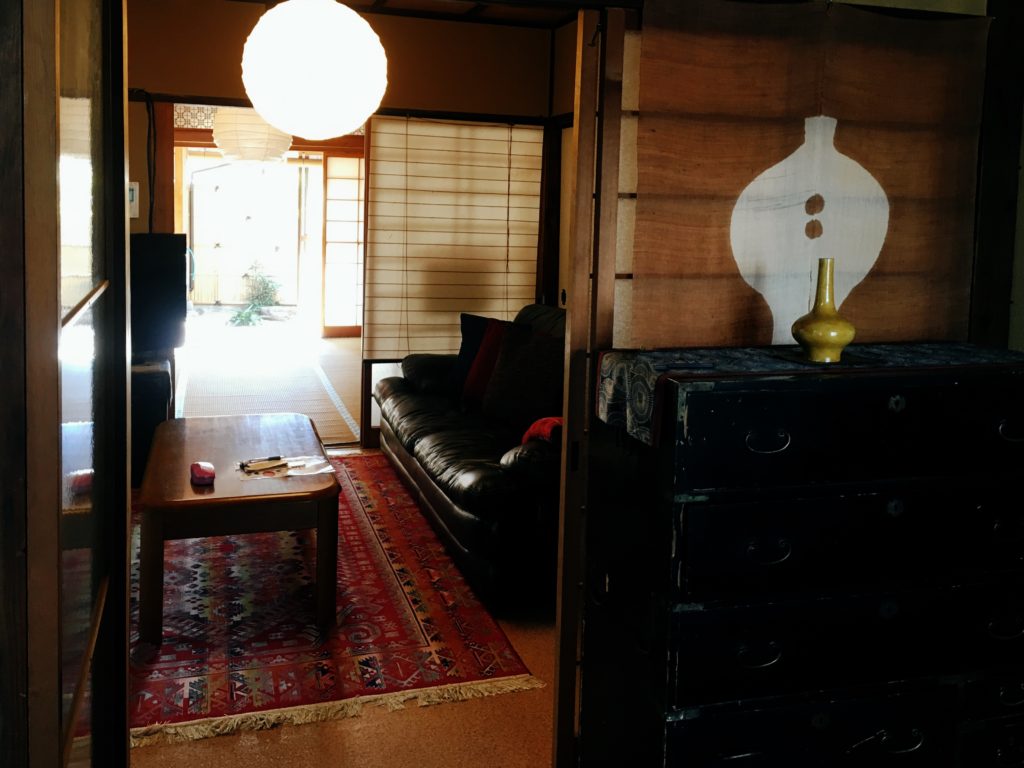
B&B Kioto’s living room
A niche market
In just the two years since she started her business, Hayakawa has seen the number of lodgings in the local area increase dramatically and has also seen a few fails. She is concerned, too, about the ongoing hotel construction boom in Kyoto.
“It will increase competition and really make things hard for this industry.”
But Hayakawa sees her market as different from that of hotels. Her goal is to offer more than just a room, whether it be a fancy one, or a cheap, no-frills one.
“I want to specialize in running a place where guests experience the day-to-day way of life in a house in the Kyoto style, and where they get more contact with the owner. As much as I can, I want to help guests when they ask for information or help to take part in various activities.”
The eternal appeal of an ancient city
Though Hayakawa wonders when Japan’s current foreign tourist boom might end, she is confident that the historical and cultural significance of Kyoto means that it will always be a popular destination.
Her goal is to offer more than just a room.
The cold of Kyoto winters and heat of its summers mean that the best times to visit will always be the peak seasons of autumn and spring. Visitors keen to experience Kyoto’s cherry blossoms or fall colors should book accommodation as soon as they can. Some services take bookings as early as six months in advance. Reservations at Kioto open three months prior.
“Please come and stay,” Hayakawa says. It would be her pleasure, too.
Kioto is a licensed and Kyoto city-approved Airbnb establishment. You can book your accommodation on this page.













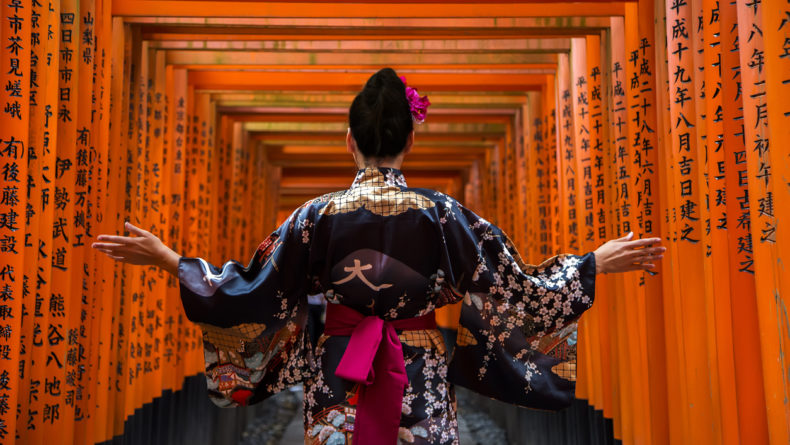
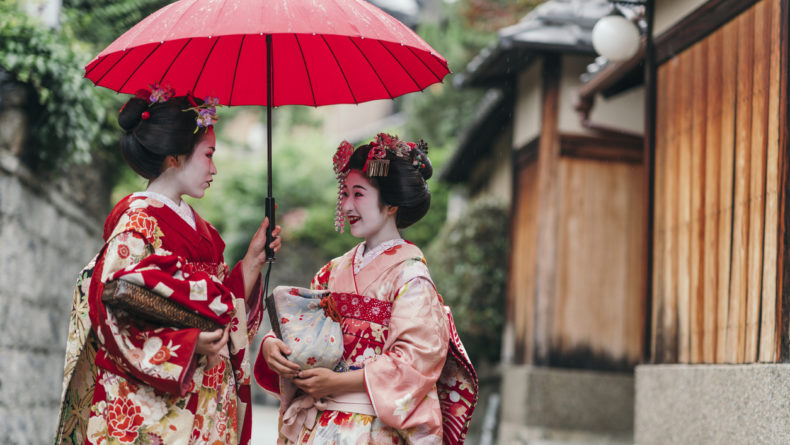
Leave a Reply